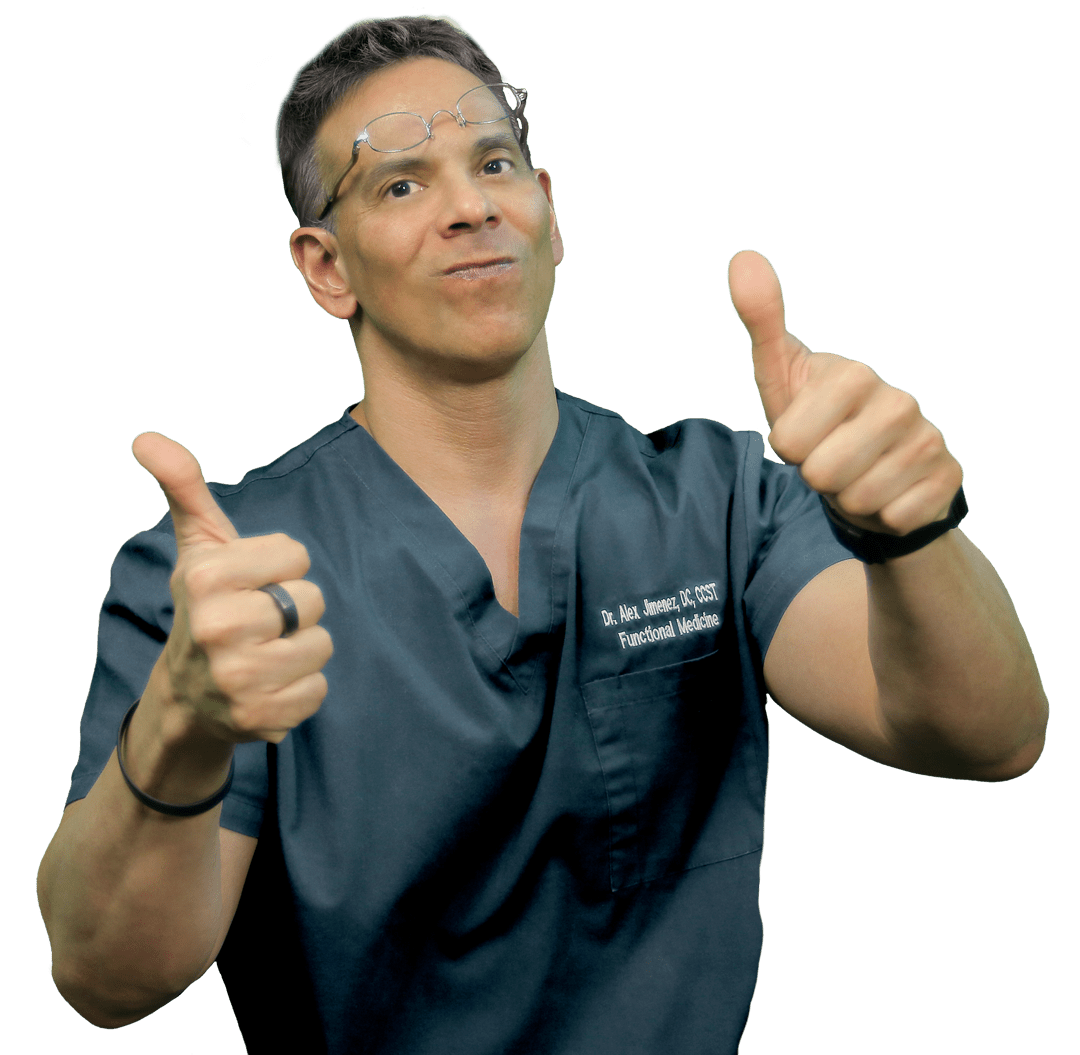Unlock the benefits of chiropractic care for text neck and promote better posture, reducing strain on your body.
Table of Contents
Text Neck and Cervical Spine Health: An Evidence-Based Scientific Approach to Assessment, Treatment, and Age-Adapted Care
Forward head posture and text neck syndrome represent complex biomechanical disorders requiring scientific assessment protocols, evidence-based interventions, and age-specific treatment approaches. Current research demonstrates that effective cervical care integrates precise diagnostic methods, multidisciplinary treatment strategies, and individualized rehabilitation programs that address both structural dysfunction and functional performance deficits. This comprehensive review synthesizes the latest scientific evidence on text neck pathomechanics, assessment techniques, and treatment protocols while emphasizing the unique considerations necessary for different age populations, from young adults to seniors requiring specialized mobility and flexibility interventions.pmc.ncbi.nlm.nih+5
Scientific Foundation: Biomechanical Analysis of Text Neck Pathology
Kinematic and Kinetic Alterations
Forward head posture creates measurable biomechanical changes throughout the cervical-thoracic complex. Recent three-dimensional gait analysis reveals that individuals with forward head posture demonstrate significant compensatory trunk flexion during multiple phases of walking, including loading response (2.21–14.50% of gait cycle) and pre-swing phases (46.45–68.86% of gait cycle). These adaptations suggest that cervical dysfunction extends beyond local symptoms to affect whole-body movement patterns and postural control strategies.pmc.ncbi.nlm.nih
Key biomechanical findings include:
-
Altered center of mass trajectories and compensatory movement patterns
-
Reduced center of mass-to-knee angles during mid-swing phase (71.26–87.92% of gait cycle)
-
Modified sagittal knee joint power and longitudinal joint forces in terminal gait phases
-
Craniovertebral angle reductions below 44 degrees correlating with functional performance deficitspmc.ncbi.nlm.nih
Neuromuscular Integration Dysfunction
Scientific evidence demonstrates that forward head posture creates systematic neuromuscular imbalances affecting precision movement control. The dominant pattern involves superficial muscle overactivation (sternocleidomastoid, scalenes, levator scapulae) with concurrent deep stabilizer weakness (deep cervical flexors, lower trapezius, serratus anterior).scientificarchives+1
Research supports neuromuscular integration approaches for forward head posture rehabilitation, showing efficacy through targeted exercise interventions that address both local cervical dysfunction and global kinetic chain impairments. However, evidence for rounded shoulder posture correction remains limited, highlighting the need for cervical-specific rehabilitation protocols.scientificarchives
Advanced Assessment Protocols for Clinical Decision-Making
Objective Measurement Systems
Modern cervical assessment requires standardized, objective measures that guide treatment decisions and monitor progress:
Craniovertebral Angle Assessment: Digital photography-based measurement with established normative values (>52 degrees typically normal, <44 degrees indicating significant dysfunction based on gait performance criteria).journalmsr+1
Cervical Range of Motion (CROM) Testing: Validated instrumentation providing precise measurements in all planes:
-
Forward flexion: 35-45 degrees normal
-
Extension: 35-45 degrees normal
-
Lateral flexion: 45 degrees each direction
-
Rotation: 45 degrees each directionpliability
Functional Movement Assessment: Integration of cervical mobility with sport-specific or occupation-specific movement patterns to identify performance-limiting restrictions.pliability+1
Diagnostic Imaging Integration
Evidence-based imaging protocols support clinical decision-making when conservative measures require enhancement:
Advanced Imaging Modalities: High-resolution MRI, Spatial Photon Counting CT (SPCCT), and dynamic imaging provide detailed structural assessment for complex cases requiring precise anatomical information.houstonphysicianshospital
Electrodiagnostic Testing: Electromyography (EMG) and nerve conduction studies identify neural involvement patterns, particularly valuable when symptoms suggest cervical radiculopathy or peripheral nerve entrapment.ncbi.nlm.nih+1
Discography and Provocative Testing: Reserved for cases where conservative care fails and surgical consultation becomes necessary, providing definitive pain source identification.umiamihealth
Building a Stronger Body = Better Life -Video
Evidence-Based Treatment Protocols: Multidisciplinary Integration
Manual Therapy and Spinal Manipulation
Systematic reviews consistently demonstrate spinal manipulative therapy effectiveness for cervical pain when combined with exercise interventions. Recent consensus guidelines emphasize evidence-based approaches to cervical joint procedures, with specific recommendations for patient selection, technique standardization, and outcome measurement.pmc.ncbi.nlm.nih+1
Technique Selection Criteria:
-
Joint mobilization for acute inflammatory presentations
-
High-velocity low-amplitude manipulation for chronic joint restriction
-
Instrument-assisted techniques for precise segmental targeting
-
Soft tissue mobilization addressing myofascial restrictionstruesportcare+2
Safety Protocols: Evidence supports manual therapy safety in appropriately selected patients, with serious adverse events remaining extremely rare when proper screening and technique protocols are followed.scuhs+1
Therapeutic Exercise Prescription
Research-validated exercise protocols target specific impairment patterns identified through assessment:
Phase I – Pain Reduction and Mobility Restoration (Weeks 1-3):
-
Gentle range of motion exercises in pain-free ranges
-
Deep cervical flexor activation using pressure biofeedback
-
Postural awareness training and ergonomic education
-
Manual therapy to address joint restrictionspmc.ncbi.nlm.nih+2
Phase II – Strength and Endurance Development (Weeks 4-8):
-
Progressive resistance training for deep stabilizers
-
Scapulothoracic strengthening emphasizing lower and middle trapezius
-
Proprioceptive training incorporating balance challenges
-
Dynamic movement patterns integrating cervical controljournalmsr+2
Phase III – Functional Integration (Weeks 9-12):
-
Sport or occupation-specific movement training
-
High-level proprioceptive challenges
-
Return-to-activity preparation with load progression
-
Long-term maintenance program developmentpmc.ncbi.nlm.nih+1
Advanced Intervention Strategies
Proprioceptive Neuromuscular Facilitation (PNF): Research demonstrates superior range of motion improvements compared to static stretching, utilizing contract-relax and hold-relax techniques to enhance flexibility through neurophysiological mechanisms.pmc.ncbi.nlm.nih
ELDOA (Elongation Longitudinaux Avec Decoaption Osteo-Articulaire): Emerging evidence shows significant improvements in pain and disability compared to traditional stretching, focusing on spinal decompression and fascial lengthening.pmc.ncbi.nlm.nih
Instrument-Assisted Techniques: Manual therapy tools and movement assessment devices enhance precision in treatment delivery and objective progress monitoring.truesportcare+1
Age-Specific Considerations: Lifespan Approach to Cervical Care
Older Adult Populations: Specialized Protocols
Research specifically examining chiropractic care in older adults with neck pain reveals important considerations for this population :drthomasforest+1
Treatment Modifications:
-
Emphasis on gentle mobilization techniques over high-velocity manipulation
-
Integration of balance and fall prevention protocols
-
Medication interaction considerations and polypharmacy awareness
-
Slower progression timelines accommodating tissue healing capacitypmc.ncbi.nlm.nih+1
Multimodal Approach Benefits: Older adults demonstrate favorable outcomes with combined manual therapy, exercise, and self-management strategies, with younger clinicians more likely to utilize multiple treatment modalities reflecting current evidence-based guidelines.pmc.ncbi.nlm.nih
Safety Advantages: Recent research suggests chiropractic care may offer safety advantages over traditional medical management in Medicare patients with neck pain, showing reduced adverse event rates compared to pharmaceutical interventions.scuhs
Mobility, Flexibility, and Agility Programs
Evidence supports targeted exercise programs emphasizing:
Cervical Mobility Enhancement:
-
Daily range of motion exercises maintaining joint health
-
Progressive stretching protocols addressing specific restrictions
-
Movement variability training preventing adaptive shorteninggonsteadchiropracticcenter+2
Balance and Coordination Integration:
-
Cervical proprioceptive training reducing fall risk
-
Multi-planar movement patterns enhancing functional stability
-
Progressive difficulty advancement matching individual capacitychiropracticscientist+1
Postural Correction Strategies:
-
Ergonomic optimization for daily activities
-
Strengthening programs targeting postural support muscles
-
Activity modification guidance promoting long-term successdrthomasforest+1
Senior-Specific Conditions and Considerations
Cervical Spondylosis Management: Age-related degenerative changes require modified treatment approaches emphasizing symptom management, function preservation, and quality of life maintenance.mayoclinic+1
Neurological Considerations: Older adults present higher risks for cervical myelopathy and radiculopathy, necessitating careful neurological monitoring and appropriate referral protocols.ncbi.nlm.nih+1
Arthritis and Joint Degeneration: Evidence-based approaches combine gentle manual therapy with targeted exercise, anti-inflammatory strategies, and activity modification to manage progressive joint changes.pennmedicine+1
Multidisciplinary Care Models: Systems-Based Approaches
Integrated Clinic Models
Research demonstrates significant advantages of multidisciplinary spine care models over traditional unidisciplinary approaches :pmc.ncbi.nlm.nih+1
Efficiency Improvements:
-
Reduced time to treatment initiation
-
Coordinated care reducing redundant assessments
-
Enhanced communication between disciplines
-
Improved patient satisfaction and outcomespmc.ncbi.nlm.nih
Clinical Decision-Making Enhancement:
-
Multiple perspectives improving diagnostic accuracy
-
Coordinated treatment planning optimizing resource utilization
-
Systematic outcome tracking enabling evidence-based modificationsmedcentral+1
Telemedicine and Remote Monitoring Integration
Emerging technologies expand access to specialized cervical care:
-
Remote consultation capabilities for follow-up care
-
Wearable devices monitoring posture and movement patterns
-
Digital exercise prescription and progress tracking
-
Virtual reality applications for movement retraininghoustonphysicianshospital
Technology Integration and Future Directions
Precision Medicine Applications
Advancing scientific understanding enables increasingly personalized treatment approaches:
-
Genetic testing informing individual treatment responses
-
Biomarker identification predicting recovery timelines
-
Personalized exercise prescription based on movement analysis
-
Outcome prediction models guiding clinical decision-makinghoustonphysicianshospital
Regenerative Medicine Approaches
Emerging biological therapies show promise for complex cervical conditions:
-
Platelet-rich plasma (PRP) injections for tissue healing enhancement
-
Stem cell therapies for degenerative disc disease
-
Growth factor applications promoting tissue regeneration
-
Tissue engineering techniques for structural restorationhoustonphysicianshospital
Clinical Implementation Guidelines
Assessment Protocol Standardization
Evidence-based clinical pathways ensure consistent, high-quality care:
-
Initial Evaluation: Comprehensive history, physical examination, and functional assessment
-
Objective Measurement: CROM testing, postural photography, and functional movement screening
-
Imaging Decision-Making: Evidence-based criteria for advanced imaging
-
Treatment Planning: Multimodal approach selection based on assessment findings
-
Progress Monitoring: Regular reassessment using standardized outcome measurespmc.ncbi.nlm.nih+2
Safety and Risk Management
Systematic approaches minimize adverse events:
-
Standardized screening protocols identifying contraindications
-
Graduated treatment progression preventing overload
-
Clear referral criteria for complex cases
-
Ongoing education maintaining current best practicesncbi.nlm.nih+2
Outcome Measurement
Valid, reliable instruments tracking treatment effectiveness:
-
Neck Disability Index (NDI) for functional assessment
-
Visual Analog Scale (VAS) for pain measurement
-
Patient-Specific Functional Scale for individual goals
-
Global Rating of Change for overall improvement assessmentjournalmsr+2
Special Populations and Adaptations
Technology Workers and Students
Occupational-specific interventions address unique risk factors:
-
Ergonomic workstation assessment and modification
-
Regular movement break protocols
-
Stress management techniques
-
Device usage optimization strategiesmichaelbraccio+1
Athletes and Active Populations
Performance-oriented protocols maintain competitive capacity:
-
Sport-specific movement analysis
-
Progressive loading matching training demands
-
Return-to-sport criteria ensuring safe participation
-
Injury prevention program integrationscientificarchives+1
Chronic Pain Populations
Evidence-based approaches for persistent symptoms:
-
Multimodal pain management strategies
-
Psychological intervention integration when appropriate
-
Activity pacing and graduated exposure protocols
-
Long-term maintenance program developmentfammed.wisc+2
Future Research Directions and Clinical Implications
Knowledge Gaps Requiring Investigation
Current literature identifies several areas needing further research:
-
Pediatric and adolescent text neck intervention studies
-
Long-term outcome studies following conservative care
-
Comparative effectiveness research between treatment approaches
-
Cost-effectiveness analyses of different care modelspmc.ncbi.nlm.nih+1
Emerging Technologies and Assessment Tools
Advancing technology offers new possibilities for cervical care:
-
Artificial intelligence applications in diagnosis and treatment planning
-
Wearable sensor technology for real-time movement feedback
-
Virtual reality applications for movement retraining
-
Advanced imaging techniques improving diagnostic precisionhoustonphysicianshospital
Conclusion: Scientific Excellence in Cervical Care
Text neck and cervical dysfunction represent complex, multifactorial conditions requiring evidence-based assessment, individualized treatment planning, and age-appropriate intervention strategies. Current scientific evidence strongly supports multidisciplinary approaches that integrate manual therapy, therapeutic exercise, ergonomic optimization, and patient education within systematic care models.pmc.ncbi.nlm.nih+3
The key to optimal outcomes lies in precise assessment using validated tools, treatment selection based on individual impairment patterns, and progression protocols that address both local cervical dysfunction and global functional performance requirements. For older adults and special populations, modifications emphasizing safety, mobility preservation, and quality of life enhancement ensure appropriate care delivery across the lifespan.drthomasforest+2
Future advancement in cervical care will likely emerge through technology integration, precision medicine applications, and regenerative therapies, while maintaining the foundation of evidence-based manual and exercise interventions that currently demonstrate the strongest research support.pmc.ncbi.nlm.nih+2
Clinicians committed to scientific excellence in cervical care must stay current with evolving evidence, utilize standardized assessment protocols, implement multimodal treatment strategies, and maintain systematic outcome measurement to ensure optimal patient results and contribute to the advancing body of knowledge in this critical area of musculoskeletal health.pmc.ncbi.nlm.nih+2
References
American Family Physician. (2020). Neck Pain: Initial Evaluation and Management. American Family Physician, 102(3), 150-156. https://www.aafp.org/pubs/afp/issues/2020/0801/p150.htmlaafp
Arizona Holistic Health Center. (2025). Tech Neck: The Role of Chiropractic Care in the Digital Age. https://azholistichealthcenter.com/blog/addressing-tech-neck-the-role-of-chiropractic-care-in-the-digital-age-scottsdale-chiropractors-arizona-chiropractic/azholistichealthcenter
Braccio, M. (2018). The Text Neck Myth. https://www.michaelbraccio.com/blog/text-neck-mythmichaelbraccio
Chiropractic Scientists. (2019). Chiropractic Therapy Keeps Senior Citizens Active El Paso, TX. https://chiropracticscientist.com/chiropractic-therapy-keeps-senior-citizens-active/chiropracticscientist
Cleveland Clinic. (2025). Cervical Spine (Neck): What It Is, Anatomy & Disorders. https://my.clevelandclinic.org/health/articles/22278-cervical-spineclevelandclinic
Cleveland Clinic. (2025). Neck Pain: 6 Common Causes and Treatments. https://my.clevelandclinic.org/health/symptoms/21179-neck-painclevelandclinic
Consensus Practice Guidelines on Interventions for Cervical Spine Pain. (2021). Regional Anesthesia and Pain Medicine, 47(1), 1-27. https://pmc.ncbi.nlm.nih.gov/articles/PMC8633772/pmc.ncbi.nlm.nih
Dr. Thomas Forest. (2025). Upper Cervical Chiropractic Care for Older Adults. https://drthomasforest.com/blog/post/upper-cervical-chiropractic-care-for-older-adults-a-specialized-approach-to-health-and-mobilitydrthomasforest
El Paso Back Clinic. (2017). Atlas Orthogonist: Cervical Spine Chiropractic Specialist. https://elpasobackclinic.com/atlas-orthogonist-cervical-spine-chiropractic-specialist/elpasobackclinic
Evidence-Based Practice and Chiropractic Care. (2012). Journal of Chiropractic Medicine, 11(3), 189-201. https://pmc.ncbi.nlm.nih.gov/articles/PMC3716373/pmc.ncbi.nlm.nih
Gait Biomechanics and Postural Adaptations in Forward Head Posture. (2025). BMC Musculoskeletal Disorders, 26, 123. https://pmc.ncbi.nlm.nih.gov/articles/PMC12329986/pmc.ncbi.nlm.nih
Gonstead Chiropractic Center. (2023). 6 Neck Mobility Exercises That Will Change Your Life. https://gonsteadchiropracticcenter.com/blog/b/6-neck-mobility-exercises-that-will-change-your-lifegonsteadchiropracticcenter
Houston Physicians Hospital. (2024). 6 Innovative Approaches to Cervical Spine Health in 2024. https://www.houstonphysicianshospital.com/6-innovative-approaches-to-cervical-spine-health-in-2024/houstonphysicianshospital
Mayo Clinic. (2025). Cervical spondylosis – Diagnosis & treatment. https://www.mayoclinic.org/diseases-conditions/cervical-spondylosis/diagnosis-treatment/drc-20370792mayoclinic
Multidisciplinary Spine Clinic Effectiveness. (2022). Pain Medicine, 23(5), 1041-1049. https://pmc.ncbi.nlm.nih.gov/articles/PMC9103560/pmc.ncbi.nlm.nih
NCBI Bookshelf. (2025). Cervical Radiculopathy. https://www.ncbi.nlm.nih.gov/books/NBK441828/ncbi.nlm.nih
NCBI Bookshelf. (2015). Geriatric Cervical Spine Injury. https://www.ncbi.nlm.nih.gov/books/NBK470375/ncbi.nlm.nih
Neck Exercise Program Effects on Biomechanical Head Alignment. (2024). Journal of Musculoskeletal Research, 27(3), 145-162. https://journalmsr.com/the-effect-of-a-rehabilitation-neck-exercise-program-on-biomechanical-head-alignment-neck-pain-and-disability-among-nursing-students-a-randomized-controlled-trial/journalmsr
Neuromuscular Integration Approach to Forward Head Posture Rehabilitation. (2021). Scientific Archives, 4(2), 78-85. https://www.scientificarchives.com/article/a-neuromuscular-integration-approach-to-the-rehabilitation-of-forward-head-and-rounded-shoulder-posture-systematic-review-of-literaturescientificarchives
NHS. (2024). Flexibility exercises. https://www.nhs.uk/live-well/exercise/flexibility-exercises/nhs
Older Adult Chiropractic Care for Neck Pain. (2019). BMC Geriatrics, 19, 350. https://pmc.ncbi.nlm.nih.gov/articles/PMC6918629/pmc.ncbi.nlm.nih
Palmer College. (2022). How Chiropractic Can Help Tech Neck. https://www.palmer.edu/palmer-blog/how-chiropractic-can-help-tech-neck/palmer
Penn Medicine. (2023). Back and neck pain: a normal part of aging? https://www.pennmedicine.org/news/back-and-neck-pain-a-normal-part-of-agingpennmedicine
Piruta, J., & Ku?ak, W. (2025). Physiotherapy in Text Neck Syndrome: A Scoping Review of Current Evidence and Recommendations for Clinical Practice. Journal of Clinical Medicine, 14(3), 947. https://pmc.ncbi.nlm.nih.gov/articles/PMC11856789/pmc.ncbi.nlm.nih
Pliability. (2025). 11 Cervical Mobility Exercises for Pain Relief & Improved Posture. https://pliability.com/stories/cervical-mobility-exercisespliability
Southern California University of Health Sciences. (2025). Chiropractic Care for Neck Pain: Safer Option for Older Adults, Study Shows. https://www.scuhs.edu/front-page-news/new-study-shows-chiropractic-care-may-be-a-safer-choice-for-treating-neck-pain-in-older-adults/scuhs
Spine & Rehab Specialists. (n.d.). Multi Cervical Unit – El Paso. https://www.spinerehab.net/multi-cervical-unit.htmlspinerehab
The Comprehensive Multidisciplinary Spine Center Model. (2022). Medical Central, 15(2), 234-248. https://www.medcentral.com/biz-policy/comprehensive-multidisciplinary-spine-center-model-and-its-impactmedcentral
True Sport Care. (2025). Tech Neck Pain? Chiropractic and Physical Therapy Can Help. https://truesportcare.com/tech-neck-pain-therapy/truesportcare
University of Miami Health System. (n.d.). Cervical Spine Disorders. https://umiamihealth.org/en/treatments-and-services/physical-medicine-and-rehabilitation/cervical-spine-disordersumiamihealth
University of Wisconsin Integrative Health. (n.d.). Integrative Approaches to Neck Pain. https://www.fammed.wisc.edu/files/webfm-uploads/documents/outreach/im/overview-neck-pain.pdffammed.wisc
Post Disclaimer
Professional Scope of Practice *
The information herein on "Chiropractic Care Benefits for Posture & Text Neck" is not intended to replace a one-on-one relationship with a qualified health care professional or licensed physician and is not medical advice. We encourage you to make healthcare decisions based on your research and partnership with a qualified healthcare professional.
Blog Information & Scope Discussions
Welcome to El Paso's Chiropractic Scientist wellness blog, where Dr. Alex Jimenez, DC, FNP-C, a board-certified Family Practice Nurse Practitioner (FNP-C) and Chiropractor (DC), presents insights on how our team is dedicated to holistic healing and personalized care. Our practice aligns with evidence-based treatment protocols inspired by integrative medicine principles, similar to those found on dralexjimenez.com, focusing on restoring health naturally for patients of all ages.
Our areas of chiropractic practice include Wellness & Nutrition, Chronic Pain, Personal Injury, Auto Accident Care, Work Injuries, Back Injury, Low Back Pain, Neck Pain, Migraine Headaches, Sports Injuries, Severe Sciatica, Scoliosis, Complex Herniated Discs, Fibromyalgia, Chronic Pain, Complex Injuries, Stress Management, Functional Medicine Treatments, and in-scope care protocols.
Our information scope is limited to chiropractic, musculoskeletal, physical medicine, wellness, contributing etiological viscerosomatic disturbances within clinical presentations, associated somato-visceral reflex clinical dynamics, subluxation complexes, sensitive health issues, and functional medicine articles, topics, and discussions.
We provide and present clinical collaboration with specialists from various disciplines. Each specialist is governed by their professional scope of practice and their jurisdiction of licensure. We use functional health & wellness protocols to treat and support care for the injuries or disorders of the musculoskeletal system.
Our videos, posts, topics, subjects, and insights cover clinical matters, issues, and topics that relate to and directly or indirectly support our clinical scope of practice.*
Our office has reasonably attempted to provide supportive citations and has identified the relevant research studies or studies supporting our posts. We provide copies of supporting research studies available to regulatory boards and the public upon request.
We understand that we cover matters that require an additional explanation of how they may assist in a particular care plan or treatment protocol; therefore, to discuss the subject matter above further, please feel free to ask Dr. Alex Jimenez, DC, APRN, FNP-BC, or contact us at 915-850-0900.
We are here to help you and your family.
Blessings
Dr. Alex Jimenez DC, MSACP, APRN, FNP-BC*, CCST, IFMCP, CFMP, ATN
email: coach@elpasofunctionalmedicine.com
Licensed as a Doctor of Chiropractic (DC) in Texas & New Mexico*
Texas DC License # TX5807
New Mexico DC License # NM-DC2182
Licensed as a Registered Nurse (RN*) in Texas & Multistate
Texas RN License # 1191402
ANCC FNP-BC: Board Certified Nurse Practitioner*
Compact Status: Multi-State License: Authorized to Practice in 40 States*
Graduate with Honors: ICHS: MSN-FNP (Family Nurse Practitioner Program)
Degree Granted. Master's in Family Practice MSN Diploma (Cum Laude)
Dr. Alex Jimenez, DC, APRN, FNP-BC*, CFMP, IFMCP, ATN, CCST
My Digital Business Card





 Again, We Welcome You.
Again, We Welcome You.
Comments are closed.